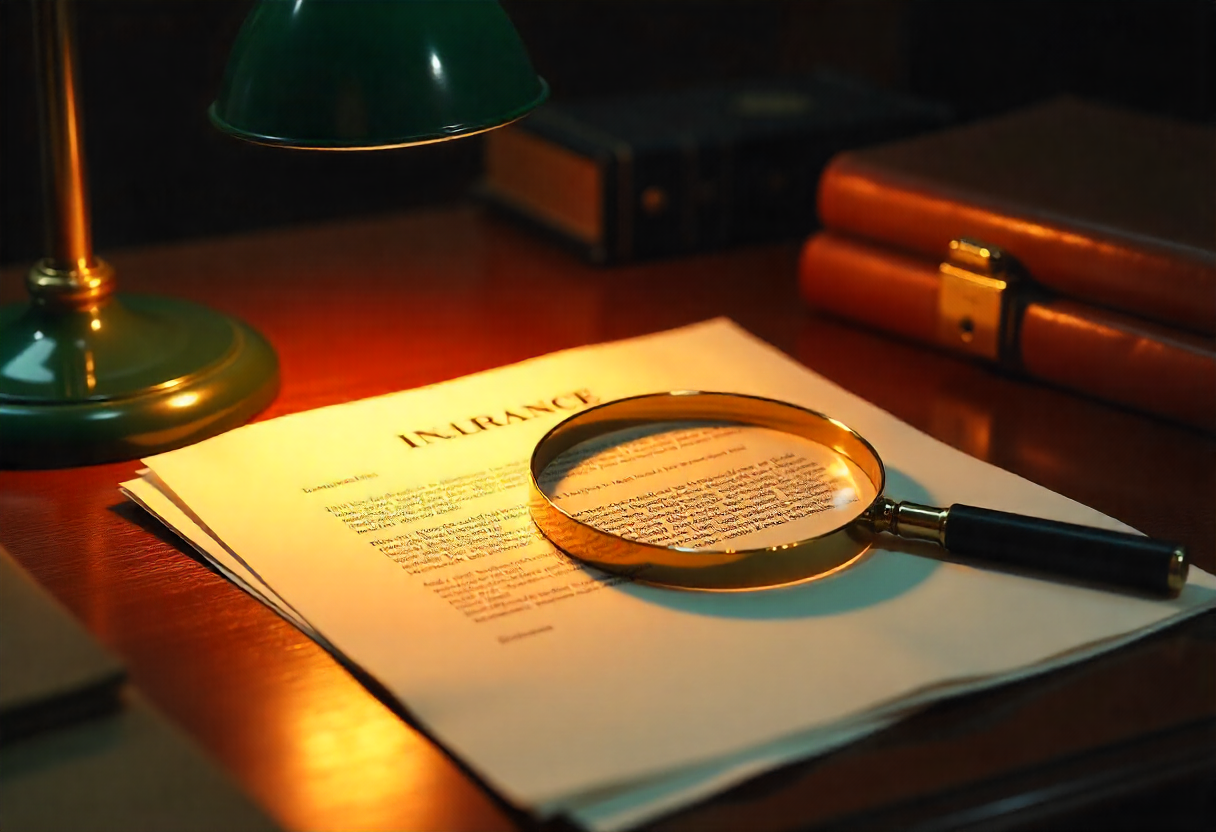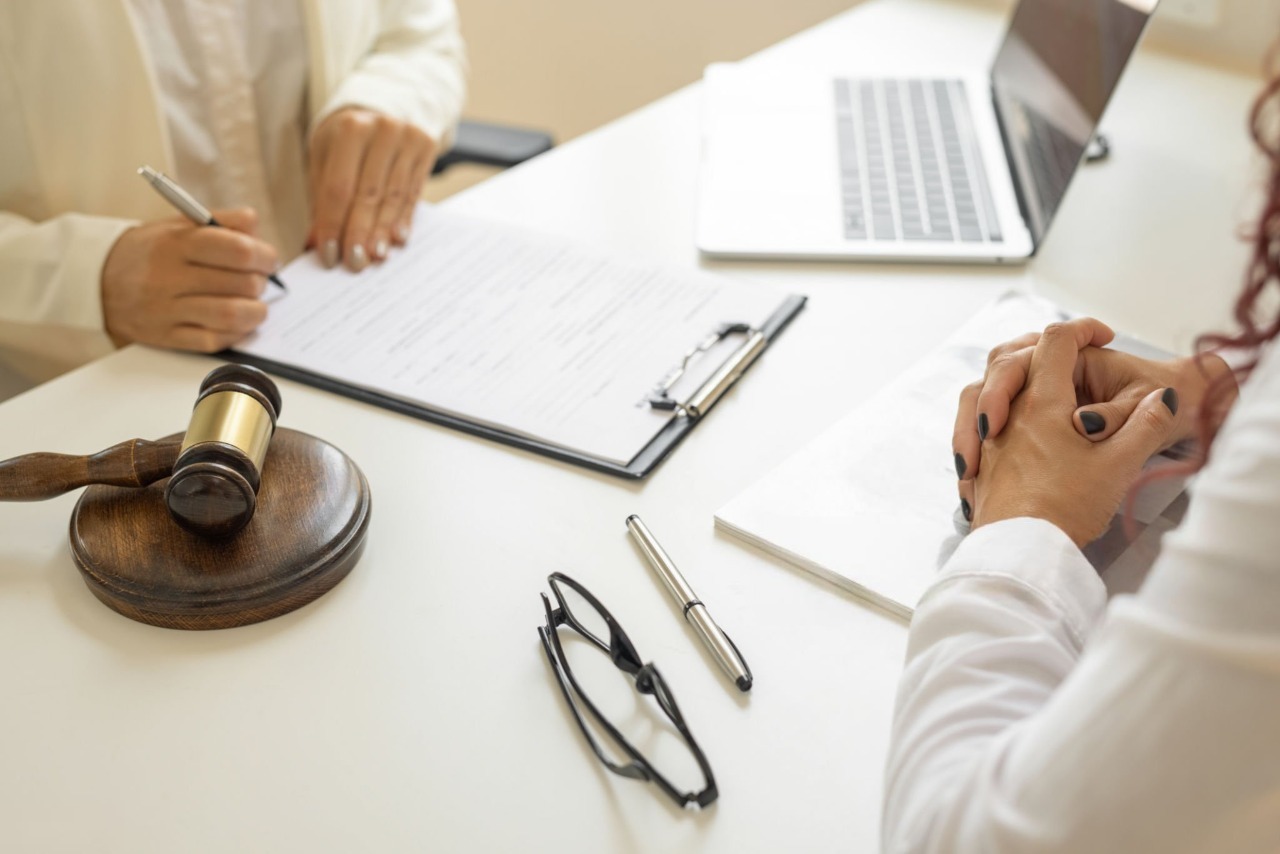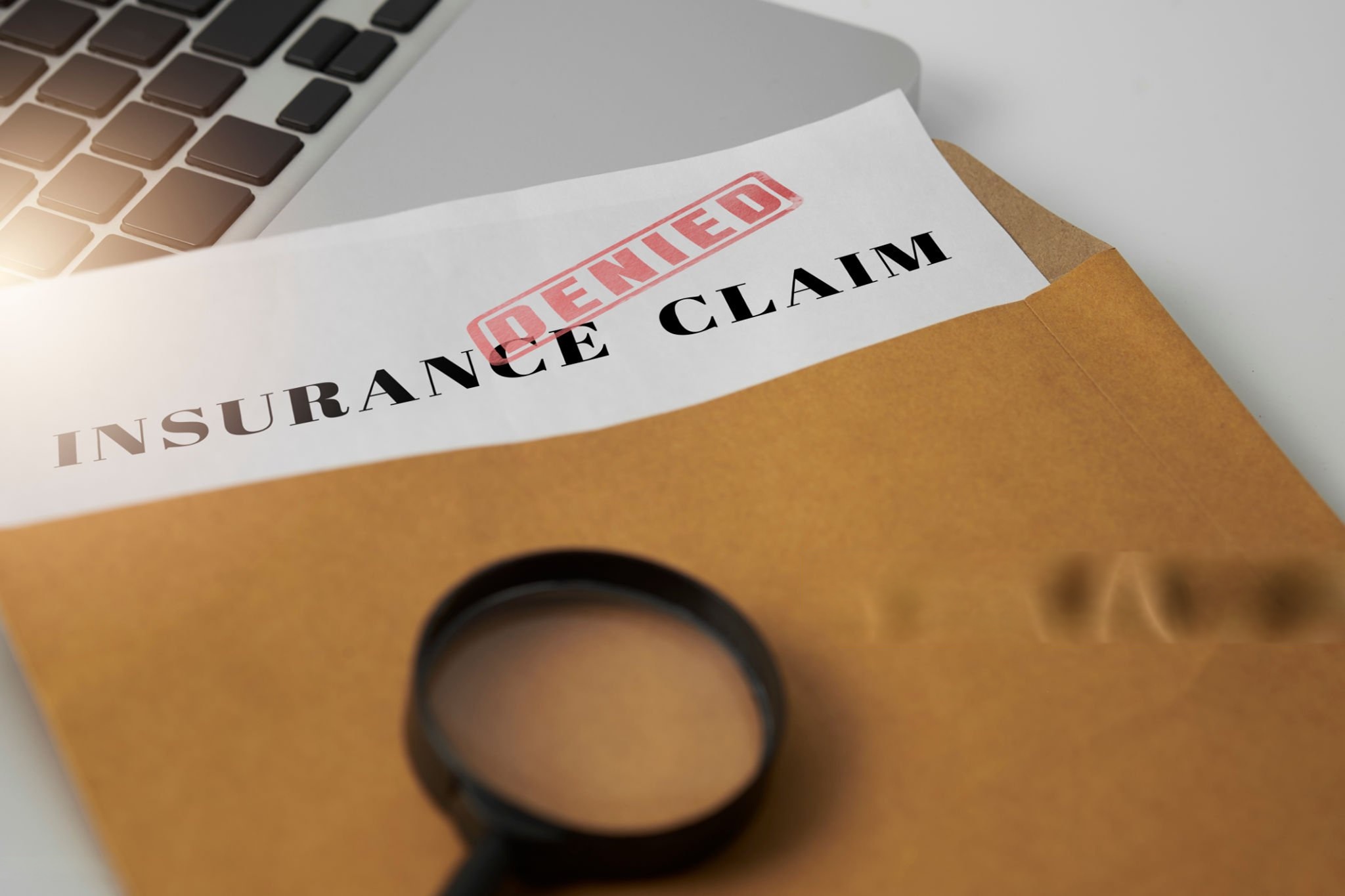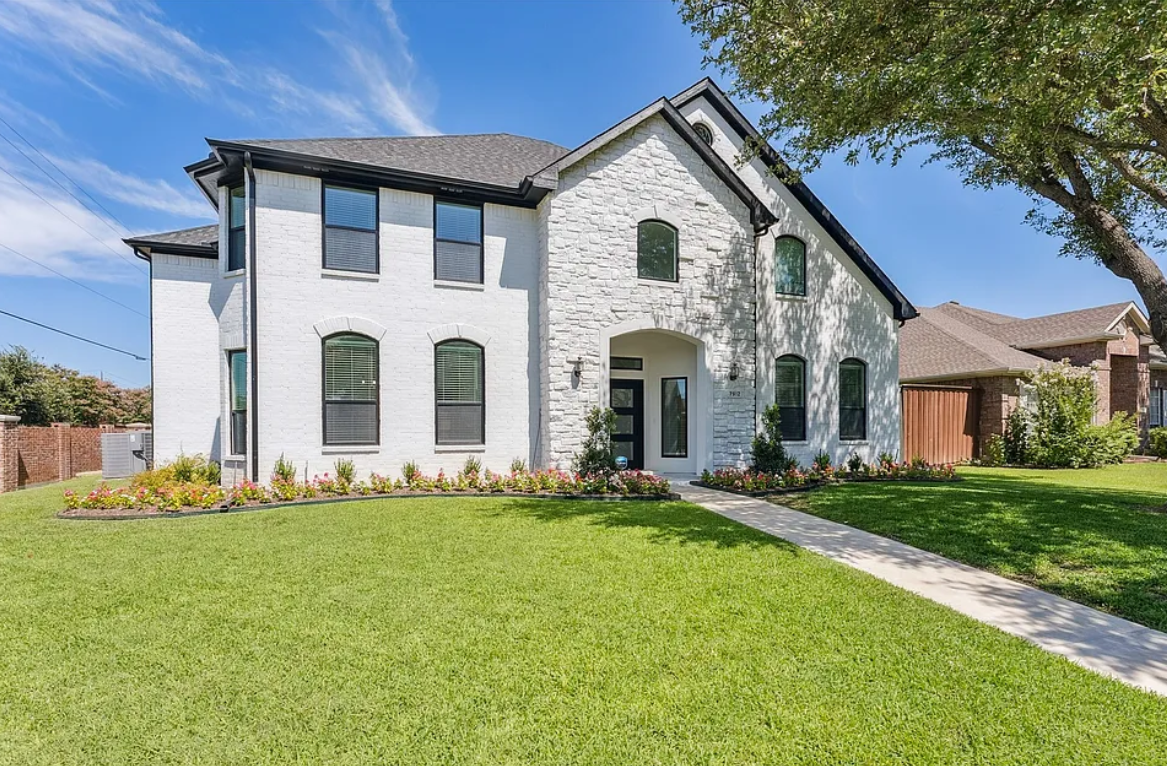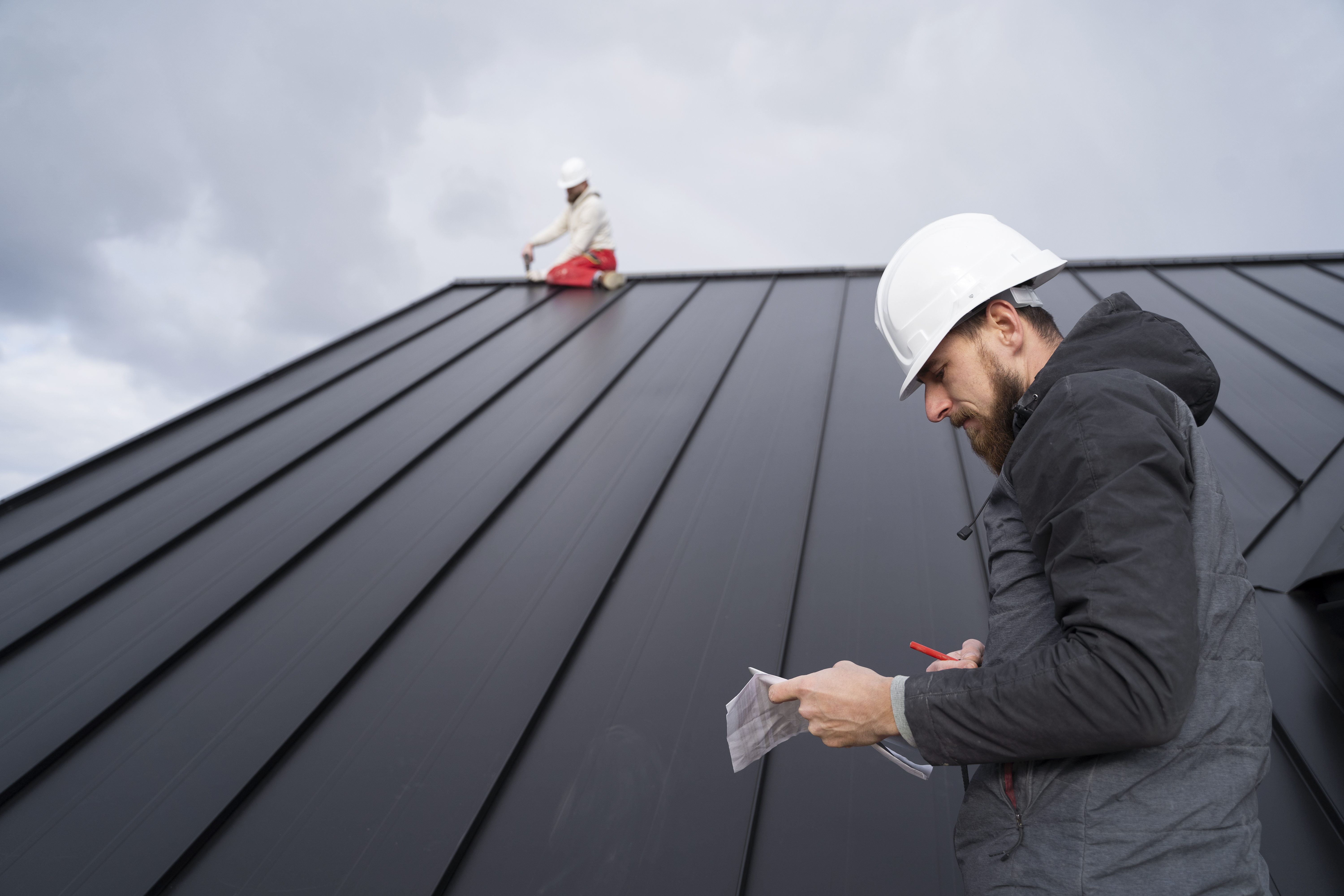When it comes to building and maintaining a commercial property, one of the highest priorities is your roof. A business’s roof does not just shield the building’s interior; but also impacts energy savings, structural performance, and work-space efficiency. In this guide, we’ll share with you two of the most typical kinds of commercial roofing mistakes; flat roof repairs and storm damage restoration, and some really excellent ways to get them fixed right away.
What You Need to Know About Commercial Flat Roofs
Flat roof types are a fairly common option for commercial buildings for their affordability, ease of installation, and practicality. But they can also have unique challenges, especially in terms of drainage and long-term maintenance. Here are some popular types of flat roofs:
- BUR (Built-Up Roofing): Layered tar and gravel.
- Modified Bitumen: Asphalt base with extra flexibility.
- EPDM Rubber Roof: Long-lasting synthetic rubber.
- TPO and PVC Membranes: Lightweight, reflective, and low-maintenance.
All of these materials have their advantages and disadvantages, but all flat roofs are more susceptible to ponding water, cracking on the membrane, and leaks than other types of roofing, especially in the absence of regular maintenance.
Also Read: Why Flat Roofs Dominate Commercial Buildings: Function, Cost, and Design Explained
Common Flat Roof Issues
Knowing what can go wrong will put you ahead of the repairs:
Water Ponding: A common problem with flat roofs is water ponding due to poor drainage or for other reasons, and water stagnating which is bad for the roof.
Cracking and Bubbling: Expansion, contraction, and exposure to sunlight may cause the membrane to crack or bubble.
Membrane Separation: If seams aren't placed properly or materials are aging, it is possible to get a membrane separation.
Roof Flashing Failure: Metal used at joints on a roof can loosen or corrode, allowing water to penetrate into the property.
How Storm Damages Commercial Roofing
Storms are the top contributor to roof damage, especially with strong winds, hail, and excessive rain. For businesses, that can mean interruption of business, destruction of inventory, and safety issues. There are a few signs that your property’s roof may have been damaged by the storm:
- Ruptured, or absent portions of the membrane
- Punctures due to debris
- Water leaks or stains within the building
- Sagging roof ponding areas
Following a storm, an inspection will prevent hidden structural damage or the growth of mold.
How To Repair Commercial Roofs Efficiently
1. Conduct a Thorough Inspection
The solution to any commercial roof damage, of course, begins with a thorough on-site inspection. This should include:
- Looking for signs of visible damage (e.g., punctures, tears, cracks)
- Assess drainage Systems ( Scupper s / Downspouts – are they clogged)
- Checking for interior water damage (ceiling stains, mold, and leaks)
- Inspecting the integrity of membrane at seams and flashing points
When getting a new roof system installed on a commercial property, there are three different aspects of the roofing process: roof removal, consideration of how the structure is going to be done, and environmental considerations. That’s where having an experienced commercial roofing contractor can be a savior.
2. Prioritize Immediate Repairs
For any open leaks or exposed areas, temporary repairs should be done as soon as possible. These may include:
- Roof tarps or patching membranes
- Resealing open seams, or flashing
- Unblocking clogged drainages to avoid water ponding
Immediate action can reduce the amount of interior damage and save money over the long term.
3. Plan Permanent Solutions
Once temporary repairs are done, the focus can shift to long-term solutions, which may possibly involve:
Patching: Suitable for small or localized damage.
Membrane Overlays: Applying a second layer over the first for stronger protection.
Full Remove & Replace: Required if the roof is more than 25-30% damaged or the system is aged.
A reputable commercial roofing contractor like 911 Exteriors Roofing and Construction will be able to suggest the best solution for the condition and age of the roof, and also for the client's budget.
4. Deal with Insurance
For storm-related damage, it’s important to contact your insurance provider as soon as possible. Here’s what you need to know about the process:
Document the Damage: Take photos and keep receipts of repairs; Be sure to get the work done immediately.
Obtain a Professional Inspection Report: Experienced insurance companies use third-party verification.
Know Your Policy: Understand what is covered, and that includes clauses on business interruption.
Most contractors who specialize in commercial roofing can always help you get through the nightmare of the insurance claim process, including coordinating with your adjuster or providing you with an estimate that can be filed and approved.
5. Hire the Right Roofing Contractor
Partnering with the perfect roofer is the first step to durable repairs. When selecting a commercial roofer, consider below points:
- Make sure they are licensed, insured, and bonded
- Seek out experience in flat roofing and storm repair
- Check the reputation and online reviews
- Request detailed quotes and warranties
Steer clear of those contractors with a bid that seems unreasonably low, because they may be cutting corners or using inferior materials.
Preventive Maintenance Tips for Commercial Roofs
While emergency repairs are necessary, maintenance helps you prevent expensive repairs and prolong the lifespan of your roof. Regular commercial roof maintenance should include:
- Bi-annual checks, preferably before and after storm seasons
- Unblocking of drains, gutters , and debris visible on the roof surface
- Minor repairs like resealing seams and replacing flashing before it becomes big stuff
- Roof coating for further UV protection and waterproofing
This proactive strategy will add years to your roof’s lifespan and provide year-round protection for your building.
Suggestions for Flat Roofing Storm-Related Improvements
Looking to storm-proof your commercial roof for the future? Consider these upgrades:
- Reinforced membranes such as TPO and PVC for increased impact and wind resistance.
- Tapered insulation systems for additional drainage and no ponding
- Secure flashing and edge metal systems which help protect against wind uplift
- Protective coatings to reflect UV rays and reduce thermal shock
These upgrades can lower utility bills and make your home more energy efficient.
Roof Replacement: When Is It Better Than Repair?
Sometimes, it’s not practical to repair a roof. Replacing is probably the way to go if:
- Your flat roof is 20–25 years or more
- Repairs will cost more than 30% of a new roof installation
- Frequent leaks or sagging
- You have a building renovation planned that involves structural enhancements
Although it is expensive, replacement can provide peace of mind, and better durability in some cases.
Get the Best Commercial Roof Repair Services
For commercial property owners, flat roof damage and storm-related wear and tear can be a huge problem. But with regular check-ups, making smart repair decisions, and taking care of maintenance, you can make your roof last longer and save yourself a lot of money.
Don’t let small problems become big ones. Trust 911 Exteriors Roofing and Construction to protect your investment. Whether it is water penetration following a storm or simply the effects of aging, we will provide fast and efficient flat roof repair services. Call us today to schedule an inspection.


